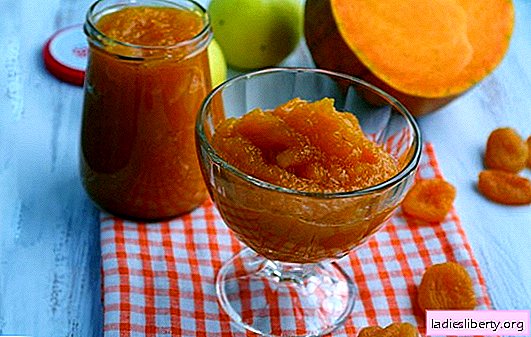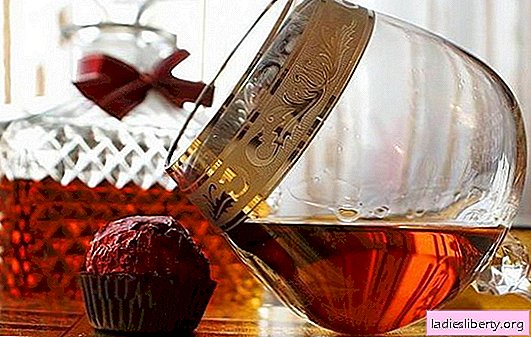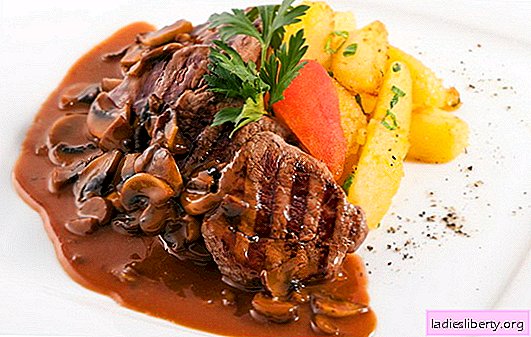
His name translates from Greek as "fresh western breeze" and he received it for its tenderness, lightness and whiteness.
Air Marshmallow love children and adults.
Is this delicacy good for health and what are the limitations in its use?
Marshmallow: composition, calorie, species
Get the classic marshmallow by churning fruit puree, most often apple, with sugar and egg whites. For shaping, fillers are used - pectin, agar-agar, gelatin. Manufacturers for essences and colors add essences, dyes, food acids.
The closest relative of marshmallow is the marshmallow, an ancient sweet delicacy of Russian cuisine. In the 16th century, the inhabitants of Kolomna learned how to make flat cakes from wiped Antonov apples, various berries and honey, which were dried in Russian ovens and cut into elongated sticks. To give the pastilles a delicate white color, egg white was used. From the 19th century, sugar was added instead of honey.
During this period, the marshmallows began to be manufactured industrially. In Soviet times, food factories produced a simplified version of marshmallow - white bars, to taste more like French marshmallows. A real candy, which is made according to an old recipe, you can try in the museum "Kolomna pastila".
Another airy delicacy resembling marshmallows - marshmallows, or chewing marshmallow. It contains corn syrup or sugar, glucose, gelatin, but there is no fruit puree. The ingredients are whipped into the foam, filled with air bubbles, and when cooled they freeze in the form of a sponge.
The invention of this sweetness is rooted in the distant past - Ancient Egypt. Residents used Althea root to treat a sore throat, mixing it with honey. Sweets were made from Althea by adding nuts and honey. Translated from English, marsh mallow is a marsh mallow, or marsh mallow. From the root of the plant, a sticky white mass is obtained, which is added to marshmallow-shaped candies.
French pastry chefs Two centuries ago, the recipe was perfected, replacing laborious in obtaining Althea juice with other components - egg white, cornstarch, gelatin. The americans automated the process of marshmallow production. All ingredients are mixed, the finished product is extruded, taking the form of a long thin cylinder, and cut into small pieces. Chewing marshmallow comes to consumers in the form of cylinders, squares, balls, flagella white, but often in the color version.
The first marshmallow began to make the French. It is assumed that they took as a basis the recipe of Russian pastila, but improved it by adding egg whites in a different proportion. If no jelly-forming components are added to the traditional pastille, they are necessarily present in the marshmallow. French delicacy turned out snow white and by airwhile the pastila is denser and not white. At the same time, the marshmallow contains a greater amount of natural components - fruits or berries, and marshmallow is more saturated with thickeners.
Pectin, gelatin, agar-agar are used as such thickeners. Taste of sweetness and structure depend on the type of thickener. Marshmallow with agar - air, with pectin more dense, with gelatin - a little rubber. What are these components?
• Agar agar - A natural product derived from algae, produced in the form of powder or plates. In cold water, the agar does not dissolve, when heated to 85-100 ° C becomes liquid, when cooled to 35-40 ° C turns into a gel. In the food industry is used in the manufacture of confectionery, ice cream, on the packaging is designated as E406.
This product has no taste, therefore add it not only in sweets, but also other dishes. Agar contains those nutrients that algae are rich in - iodine, calcium, iron.
• Pectin get from plants. Citrus peel, apple pomace, beet pulp of sunflower baskets, sea grass, and sugar beet are used as raw materials. Pectins used in the food industry are brown or light cream powders, odorless. Once in the water, the powder absorbs it, like a sponge, swells and, upon reaching a certain size, dissolves. Pectins are used in both food and pharmaceutical industries. They contain purified polysaccharide and are used as an E440 additive.
• Gelatin produced by the method of boiling cartilage, bone and tendon tissues of animals. Food gelatin is sold as a powder or granules. In cold water, it swells, dissolves in hot water, and when cooled, the solution solidifies. If more gelatin is added to the sweetness than is required by the recipe, the meat taste is felt. Gelatin is mainly composed of proteins - 100 g of them contain 87.5 g, and another 18 types of amino acids. It is denoted as additive E441.
Calorie marshmallow is quite high, but since its manufacture does not use fats, it is lower than the caloric content of chocolate or sweets, cakes, cookies. There are many types of marshmallow, different taste, composition, calorie. In this case, the latter figure may depend on the raw materials and additives used. So, the caloric content of delicacy from agar-agar is much lower than from gelatin.
As additives, fruit fillings, frosting, nuts, coconut chips are used. The more additives are included in the composition, the calorie product. Marshmallow mostly consists of simple carbohydrates, proteins occupy only 1-2%. Vitamins are practically absent, as they are destroyed in the manufacturing process.
Some manufacturers add to the composition of new components not previously used - a small amount of oil, yolks, which increases the calorie content of the product. By studying the composition of a white marshmallow package, we can see that 100 g contains 318 kcal, as a percentage, carbohydrates predominate, but fats are also present.
In the same amount of chocolate - already 399 kcal, of which the share of proteins is 1.3%, fat - 13%, carbohydrates - 84%. Thus, chocolate marshmallow, containing too much fat and carbohydrates, is a high-calorie product. On average, the caloric content of 100 g of marshmallow is 300 kcal.
But even in the white marshmallow of some factories contains more than 400 kcal. Experts advise to pay attention to the appearance of the marshmallow. If it is not white and airy, but dense, heavy, gray in color, with a damp middle, then, most likely, the producers used dry or frozen proteins instead of fresh eggs. You should not buy such a product, it is not only tasteless, but can harm the body.
Marshmallow: what is the benefit for the body?
Based on the available information, conclusions can be drawn about the benefits of marshmallow. Depending on which formative substance is used, the beneficial properties of marshmallow for health are noted.
Gelatin, which is a part of marshmallow, is especially useful for joints when accreted after injury. Sore joints become more mobile. Gelatin has a beneficial effect on digestion, heart and blood vessels, improves the condition of nails, hair and skin, returning her youth and freshness.
Agar-agar containing iodine, especially useful in diseases of the thyroid gland. When it is used, the risk of oncology is reduced, the condition of the skin improves, the liver works, the body is cleansed of toxins and toxins.
Pectin removes toxins and salts of heavy metals, strengthens the immune system, lowers cholesterol, blood pressure, has anti-ulcer properties.
Since marshmallow is made on the basis of fruit, it contains glucosenecessary for a person as a source of energy. It improves brain activity. When there is little glucose in the blood, the brain reacts with symptoms such as nervousness, irritability, hunger, palpitations. In a healthy person, the sugar level fluctuates, but remains normal. Its smallest value happens in the morning after sleep and on an empty stomach. If the body needs glucose, to replenish it is enough one thing marshmallow.
Marshmallow: what is the harm to health?
The main harm to health can bring the abuse of marshmallows in large quantities. However, the same effect has an excess of the consumption of any products. Overeating marshmallow is fraught with weight loss and even obesity.
Who can be harmful marshmallows:
1. Due to its high glucose content, this product is contraindicated for those who suffer from diabetes. But there is a solution - for diabetics invented marshmallows on fructose.
2. Due to the high content of carbohydrates marshmallow is not recommended for people with impaired carbohydrate metabolism.
3. A harmful effect on a weak body has a marshmallow with dyes.
4. In allergic people, various additives can cause a negative reaction - chocolate, nuts, powders.
For pregnant and lactating mothers: the harm of marshmallow
You can eat marshmallows during pregnancy. in moderationif there are no contraindications. Some experts believe that the use of this product during pregnancy contributes to the elasticity of the skin and serves as prevention of stretch marks. Marshmallow containing carbohydrates, stimulates the production of serotonin, which is called the "hormone of joy." Nursing mothers also want sweet, because the body is depleted after childbirth and seeks to replenish resources.
During lactation, there is a whole series of prohibitions on seemingly harmless products. Although the marshmallow itself is made from natural ingredients, especially at home, the factories use various ingredients that can cause allergies in the baby - flavors, essences, food acids, dyes.
Nevertheless, there are no contraindications of experts about the dangers of marshmallow during lactation. Of course, it should be consumed in small quantities. When buying, be sure to examine the composition. It is desirable that there are no harmful additives, the composition of the marshmallow was closest to the classical: berry-fruit mass, sugar, egg white and thickener.
Color is better to choose white, without bright dyes. Varieties of marshmallow - in chocolate glaze, with coconut flakes is not recommended for pregnant women and nursing mothers. Such components can cause allergies in both the mother and the child.
Marshmallow for kids: good or bad
For children, eating marshmallow is much more beneficial than candy. Doctors recommend this delicacy to schoolchildren to make it easier for them to cope with intense mental stress. Its protein is quickly digested and helps to overcome the feeling of hunger. Glucose strengthens the immune system of the child. There is a lot of sugar in marshmallow, which is harmful for a child, as it can contribute to tooth decay. The recommended rate is no more than 2 pieces per day.
Marshmallow: harm and benefits for losing weight
Those who follow a diet, you can feast on marshmallows, but in small quantities. The main advantage of this sweet is that there is little or no fat in it, which is important for those who want to lose weight. One thing marshmallow may well replace a piece of cake or cake.
It is necessary to study the composition of the product and calorie content. According to this indicator, marshmallows from different manufacturers are quite different. If gelatin is used as a thickener, the number of calories is higher, if agar-agar is lower. Other indicators also affect calories.
Without sweet live boring and uninteresting. Dessert saves from depression, uplifting. Even if there are restrictions in the use of sweets, a small portion of marshmallow will not bring any harm to health.











